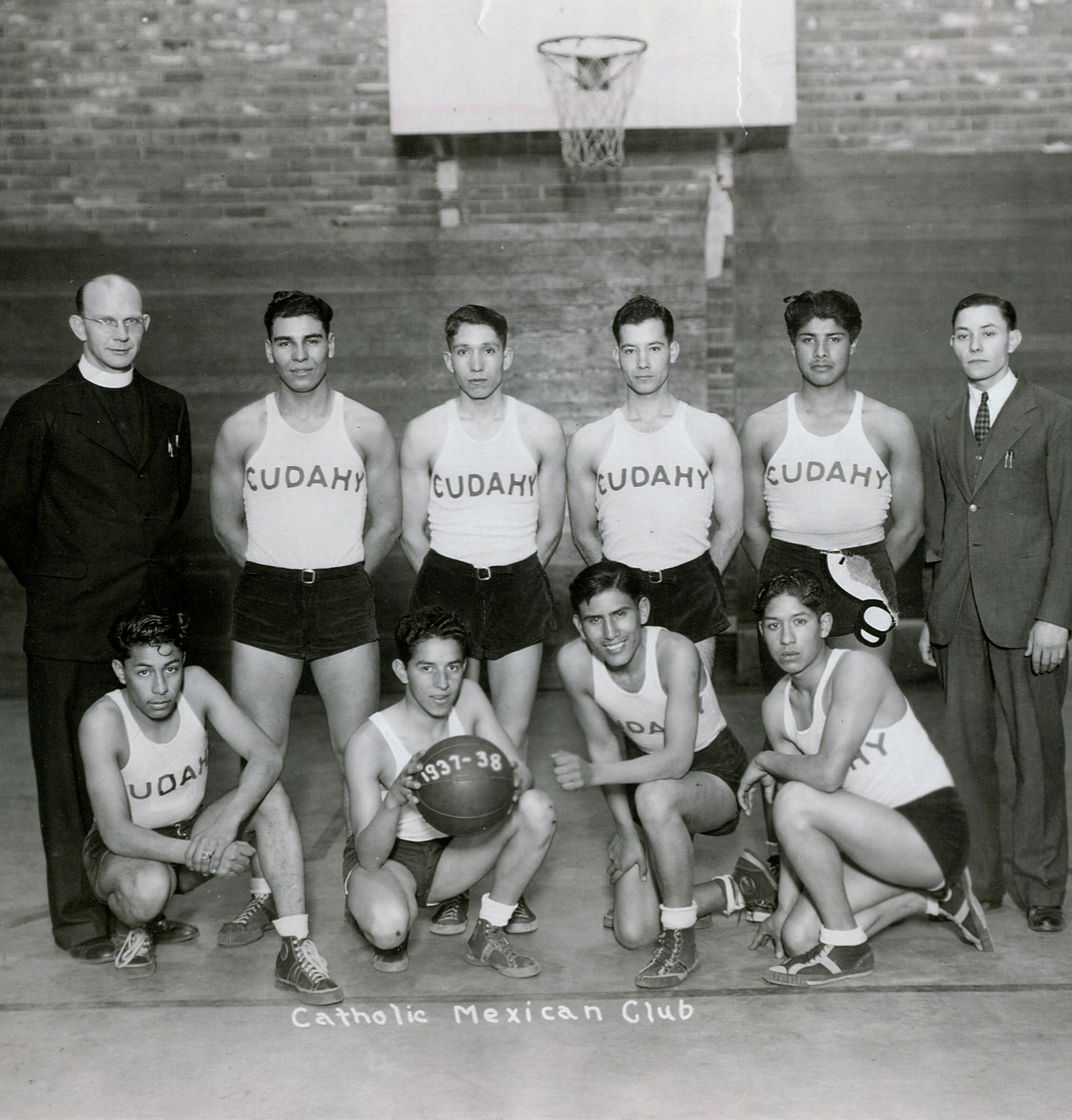Dr. Jay Price has come up a few laws of history in his teaching and research career. One particular gem: “History is not written by the winners. It's written by the survivors. And what survives is what we remember.”
It’s for the sake of helping memories survive, even thrive, that Price, professor and chair of the Wichita State University history department, has teamed up with Dr. Enrique Navarro, associate professor of Spanish, for “Somos de Wichita,” an exhibit that documents Wichita’s Latino history in photographs.
“I’ve looked at various aspects of the north end, and it’s an area that's been needing a lot more attention,” said Price, who works with the university’s local and community history program. “There’s just a wonderful richness to the story there, but a lot of it tends to get a little simplified. This was a chance to really try to try to tell the story in a little bit more depth.”
Navarro says “Somos de Wichita,” which translates to “We are Wichitans,” is about telling the story of the Latinos who helped shape Kansas’ largest city into what it is today.
“I come from the literary field, and when you are doing an analysis of a narrative it´s pretty important who is telling the story and who are the main and supporting characters,” Navarro said. “In national histories certain groups are left out or are set to play secondary roles. The idea of this project is to shed some light on the history of Wichita from the point of view of the different Latino communities, and also on their lasting contributions to history of this city.”
At its heart, Somos is designed to be a community project, Navarro said. The idea is to create a timeline with pictures collected from Hispanic families who live in Wichita — whether they’ve lived in the city for 10 years or five generations.
“We started this project with the idea that it should be a community-based research project, and the community will be really involved instead of academia telling the story,” he said.
Initially, the exhibit was slated to be a traveling, pop-up exhibit with a digital accompaniment. However, as with most recent events, the COVID-19 pandemic has altered those plans. The digital collection launched July 23 at somos.wichita.edu.
The website is appropriately and intentionally bilingual, Price said.
“One of the things that was a very important part of our discussion and one of the reasons why it's an interdisciplinary project involving our two disciplines is because we wanted it in Spanish as well as in English,” he said.
Navarro said creating content in Spanish and English gives the website broader generational and cultural reach.
“Basically, what you have is that the second generation of immigrants, no matter where they come from, they usually use the language,” he said. “After that, the next generation tends to lose that language, so we’re keeping that in mind. We're going to have a lot of visitors that are first or second generation, and maybe they're going to feel more comfortable having it in Spanish; and we're going to have also a family of third, fourth or fifth generation, and they may have already lost Spanish.”
Families can still submit photos via the website, Navarro said. Even the tiniest details of family photos can reference precious details about Wichita’s history.
“They might think that those pictures don't have any relevant information, but they do: for example, the dresses that they're wearing, or if they are taking a picture outside, you can see the changes in their neighborhoods and in the streets,” Navarro said.
Price said these photos will help elevate the stories of Latino Wichitans.
“Part of this is that communities are often hidden in plain sight in a place like Wichita. The name — we are Wichitans, or Somos de Wichita — says that Latinos are absolutely as much a part of our city as the trading post operators of the 1860s. We’re helping Wichitans realize that this has been a vibrant, and remains a vibrant, part of our story,” he said.
The project has created valuable hands-on learning and research experience for students. Six undergraduate and graduate students are assisting Price and Navarro, planning the exhibit, and collecting and digitizing the photographs.
Cinthia Lopez, a graduate student in education from Honduras, has been working to translate the website information to Spanish.
“Since I’m teaching Spanish, this is a good opportunity for me to know more about the Hispanic community and share with my students, so they understand that many of their families are part of this city’s history,” Lopez said.
Josh Mackey, a graduate student studying history, moved from Copan, Oklahoma, to Wichita. He said Somos is an opportunity to learn more about his new home.
“For me, this project offers an opportunity to give my Latinx neighbors to have a greater platform, and to give Wichitans of all backgrounds to better recognize the historical presence and contribution that our local Hispanic community has had,” said Mackey. “While this exhibit is far from all-encompassing, it is a start in the right direction to recognize Latinx history as Wichita history.”
Mackey said his involvement with Somos was likely one of the key reasons he was recently hired by the Kansas Aviation Museum as a curator.
“This applied learning opportunity helps in my education and career plans by giving me a concrete example of exhibit planning, collections and community engagement as a museum professional. This experience has already paid dividends,” he said.
The “Somos de Wichita” project was funded by grants from Humanities Kansas and Wichita State. Once the traveling portion of the project (which is on hold until some of the uncertainty of COVID-19 is resolved) is complete, the photos — whether they are originals or scanned copies — will be donated to WSU Special Collections, where they will be archived and maintained.


 Courtesy
Courtesy